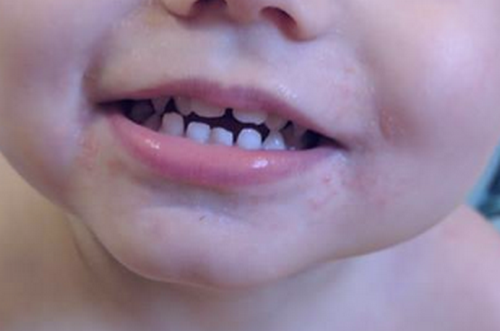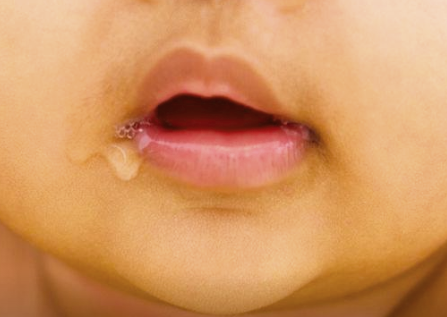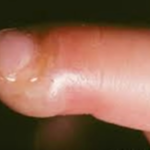Drooling in babies is mainly caused by teething, although there are times when a child can drool even when teething is not the underlying cause. When the baby constantly drools on the chest and the chin, the skin will develop a red irritation called a drooling rash. There are certain things that you should know about this condition which can cause your baby a lot of discomfort.
What is a Drool Rash?
A drool rash is a red irritating skin condition that develops on the baby’s chest, the folds of the skin on the neck and around the mouth and cheeks; it is caused by having too much saliva on the skin keeping it wet and the rash develops.
Symptoms
A Drool rash presents as slightly raised or flat patches of skin that have tiny red bumps. They may also look chapped. The most common cause of the rash, as the name suggests, is drooling. However, it can also be caused by other factors such as leaving smeared food on the lips for too long or excessive use of a pacifier which keeps the skin on the mouth wet.
How to prevent a drool rash
It is quite challenging to stop a baby from drooling so the best practice is to stop the development of the rash. A baby’s salivary glands become active between two and three months which means the baby may drool even when not teething.
In order to prevent the development of the rash, the skin must be kept dry by wiping away the drool using a soft cloth. A dry clean skin will not develop this kind of rash. Use the cloth to wipe the face, and the folds of the skin on the neck frequently. Do not rub the skin, but dab at it so as to avoid irritating it.
If the drooling is profuse and keeps making the shirt wet, then use a bib which you can change when it gets wet. The material of a wet shirt can rub against the baby’s skin causing irritation and also chaffing in conjunction with the drool rash.
How to treat a drool rash
When a drool rash develops, then you have to make sure that the baby is comfortable as you try to treat it.
- Wash the skin gently, at least twice a day, with warm water, and the dab the skin to dry it; do not rub the irritated skin. Do so until the skin is completely dry.
- Apply a thin coat of petroleum jelly, or healing ointment; these act as a barrier between the drool and the baby’s irritated skin. The ointments also have a soothing effect and help the baby get more comfortable.
The best practices
- Always keep the irritated skin dry using a soft towel; remember to dab, not rub the skin
- Use a bib and if the clothes get wet, change them immediately
- Get a barrier cream, jelly or ointment to help soothe and treat the rash
- If the rash does not get better, then see a paediatrician immediately
- Use an unscented, mild baby wash during bath time, and then use an unscented lotion on the baby’s skin. However, you should not use a lotion is the rash has already developed. If the drool has developed, then you should get a cream that has healing ointment or hydrocortisone.
- Try and avoid potential irritants in the immediate area where the rash has developed, since this will make the baby uncomfortable. When washing the baby’s clothes, ensure that you use a fragrance-free laundry detergent for everything that will come in contact with the baby’s skin.
- You should also wash your own clothes using the same detergent. You should avoid using scented lotions and perfumes which will affect the skin.
In order to reduce the amount of drooling caused by teething, try and give the baby something cold, but not frozen; the cold will help soothe the gum. You could also use a teething rig or a cold piece of cloth. The cool effect tends to numb the gum and will also soothe any rash that may have formed around the mouth. You should pat-dry the baby’s mouth immediately afterwards.
When to visit the pediatrician
A drool rash will not last long and will not be a major irritant when properly managed and treated using home remedies. However, there are certain situations when you should best see the pediatrician.
- When the drool rash has become cracked, weepy, or is causing the bay a lot of pain.
- If the drool rash lasts for more than one week when you use home remedies for treatment
The pediatrician will be able to give some medication which will ensure that the baby does not experience a lot of pain and the rash will heal faster.




